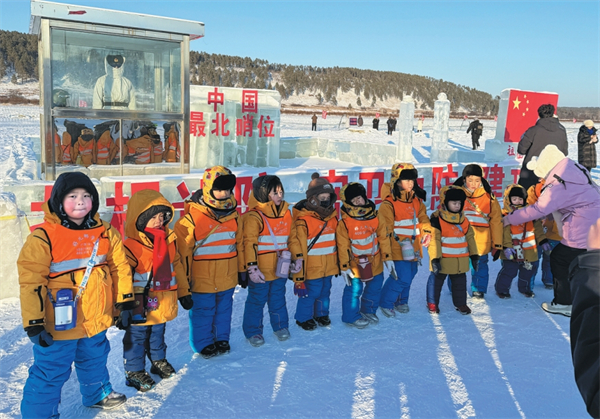Home>Transportation
Transportation
Updated : 2018-05-16
By ( e.my399.com )
Located 33 kilometers northwest of the downtown area, Harbin Taiping International Airport (HRB) is currently the second-largest airport in Northeast China. It is well equipped to handle 12.24 million passengers annually, with more than 50 air routes covering more than 40 domestic and overseas cities, including Beijing, Shanghai, Guangzhou, Changsha, Seoul, Osaka, Vladivostok and Los Angeles.
The airport has two terminals, domestic and international. The automatic check-in counter can be found at the information desk of China Southern Airlines, second floor, Terminal Building. Travellers may check-in and print boarding passes there.
Travel from the airport to the downtown area takes about an hour by shuttle bus and about half an hour by taxi. The bus costs 20 yuan ($3.02) a person, while the taxi costs about 100 yuan. Outbound travellers are advised to arrive at least two hours prior to flight departure.
Railways
Harbin is the second-largest railway junction in Northeast China. The city has four railway stations, Harbin Railway Station, Harbin West Railway Station, Harbin East Railway Station and Harbin North Railway Station.
Located in Nangang district in the center of the city, Harbin Railway Station has daily train services to Beijing, Shanghai, Guangzhou, Changsha, Xi'an, Chengdu, Wuhan, Shenyang and Hangzhou. The 118-year-old station is under reconstruction, which will be completed by the end of 2018.
Harbin West Railway Station is the terminus of Beijing-Harbin and Harbin-Dalian high-speed railways. It mainly operates high-speed or bullet trains to areas in Northeast China, including services to and from Jilin province, Dalian, Shenyang and Beijing.
Located in Daowai district, Harbin East Station is also named San Ke Shu Zhan (Three Trees Station). It is a traffic hub combining railway, highway and subway.
Harbin North Railway Station mainly operates high-speed services to and from Qiqihaer city as well as some regular-speed services.
Public transport
By the end of 2016, there were a total of 289 bus routes in Harbin, with 7,408 buses in operation, forming a comprehensive transport network connecting urban and suburban areas in the city. The number of taxis was 18,193, with annual passenger capacity reaching 570 million. The construction of metro system in Harbin started in 2008. According to the construction plan, the city will build a total of ten metro routes in 20 years. So far, the first and second stages of No 1 metro route, as well as the first stage of No 3 metro route have been put into use. The No 1 route in operation runs between Harbin South Railway Station and Harbin East Railway Station, covering 18 stations, including Harbin Engineering University, the First Affiliated Hospital of Harbin Medical University, Harbin Institute of Technology, Heilongjiang University and the Second Affiliated Hospital of Harbin Medical University. The section of No 3 metro route in operation links the Second Affiliated Hospital of Harbin Medical University with Harbin West Railway Station, with two stops at Harbin Street and Haxi Street.
Waterways
Harbin harbor is the largest inland harbor in Northeast China. Its courses spread to the Songhua, Heilong, Wusuli and Nenjiang rivers, and link to ports in Russia, Japan, Korea and Southeast Asia. The harbor is now a passenger transport and freight port, though ships can only operate from April through to early November.

Harbin ramps up childcare services
A new comprehensive service center for childcare in Harbin is expected to be finished by the end of the year.
-
Talent policies drive enterprise development in Harbin
Harbin's "30 New Talent Policies" represents an iterative upgrade to the talent policy system, helping attract and retain talent to bolster economic and social development.
-
Official website of 2025 Asian Winter Games goes live
Harbin, the host city of the 9th Asian Winter Games, has announced that the official website for the 2025 event has recently gone live.
-
Harbin launches measures to facilitate more foreign trade
In the first three quarters of 2023, the total import and export value of Heilongjiang province's goods trade hit 218.22 billion yuan.





